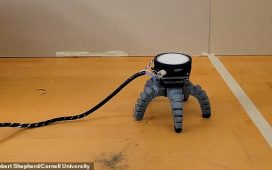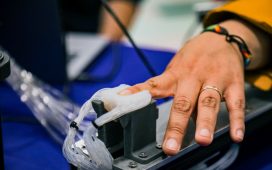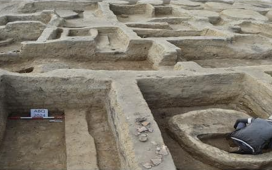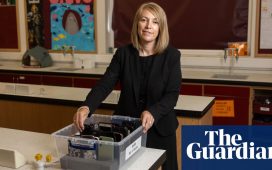A California startup wants to boost the world’s power production by effectively ‘selling sunset‘ after dark with solar panels to create daylight on demand.
Reflect Orbital aims to reflect the sun’s rays over solar panels on the earth’s surface well after it’s gone dark. Stunning video footage shows how the tech could illuminate the night sky with the reflected light.
CEO Ben Nowack presented his company’s ambitious plan during the International Conference on Energy from Space, which took place in London this April.
Many speakers talked about having solar panels up in space, but Nowack has a different idea. He wants to shoot 57 small satellites into orbit armed with 33-square-foot ultra reflective mylar mirrors that would theoretically bounce sunlight back down to solar farms.
The satellites, orbiting 370 miles above the surface, could provide an additional 30 minutes of sunshine to those solar power plants during peak demand times, The Deep Dive reports.
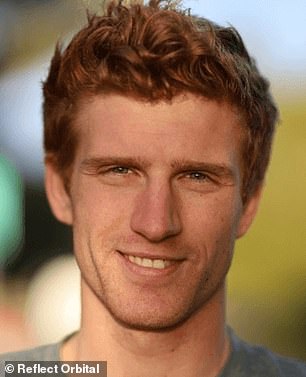

Reflect Orbital cofounders Ben Nowack, left, and Tristan Semmelhack, right, want to revolutionize solar power and make it a more viable renewable energy source
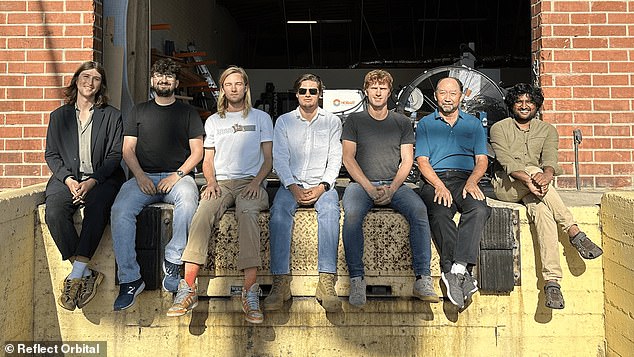
Pictured: The seven employees who make up Reflect Orbital. The team recently flew a hot air balloon fitted with a mirror that successfully reflected sunlight down onto solar panels
‘The problem is that solar energy is not available when we actually want it,’ Nowack said during the conference, explaining that solar farms can’t produce any energy at night.
His company aims to be the one to sell this valuable energy past dark to solar plants, which would then send it to people’s homes.
Nowack and cofounder and CTO Tristan Semmelhack also believe that space flight has gotten cheap enough so that using satellites wouldn’t be cost prohibitive. Instead, they think they can be profitable.
To test out the workability of their idea, Reflect Orbital’s team of seven men fit an eight by eight-foot mylar mirror onto a hot air balloon, intending to reflect sunlight onto solar panels they towed in on a truck. A mylar mirror is a glassless mirror made from polyester film stretched over a raised aluminium frame.
They were out in the field tweaking the process for weeks until they finally got a breakthrough.
They shared the bombshell results in a YouTube video published in March.
Eventually, from a distance of 242 meters away (nearly 800 feet), the mirror on the hot air balloon reflected light down onto the solar panels, which generated roughly 500 watts of energy per square meter of panel.
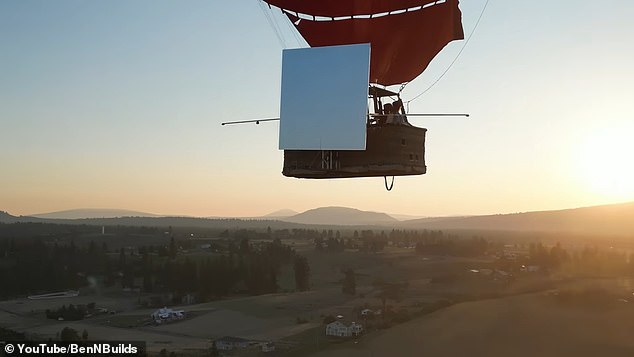
Reflect Orbital’s team flew up in a hot air balloon fitted with a mylar mirror to test the viability of their plan to redirect sunlight over solar farms
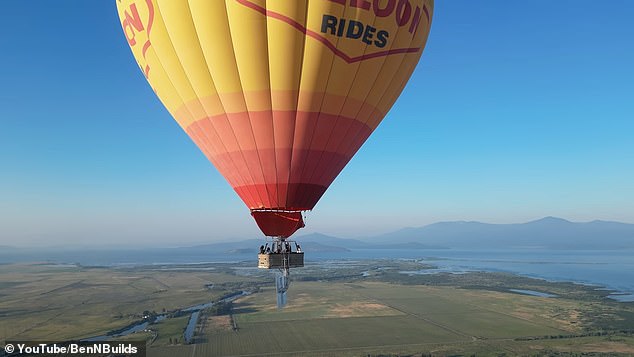
The men spent weeks tweaking and calibrating various processes
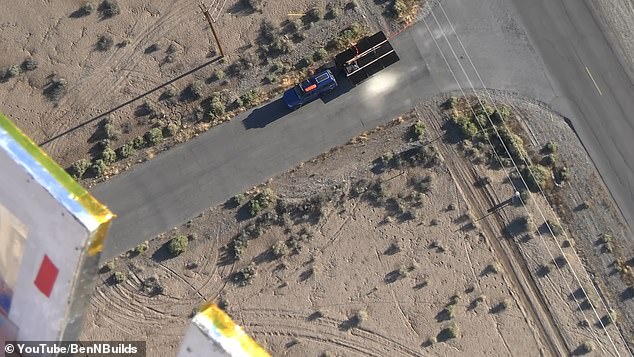
Eventually, they were able to reflect a powerful beam of sunlight directly onto the solar panels on the ground
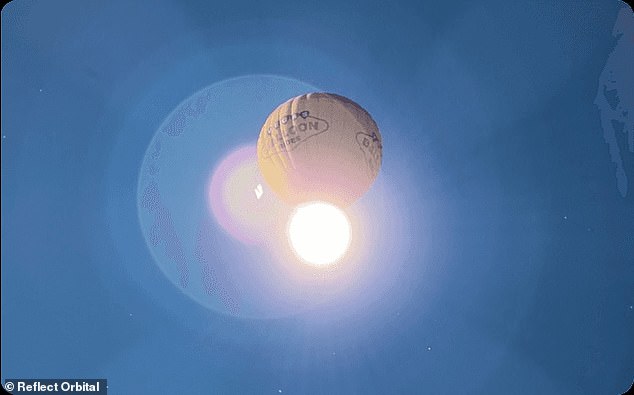
Pictured: The view from the ground as the balloon bounces sun rays down to the Earth
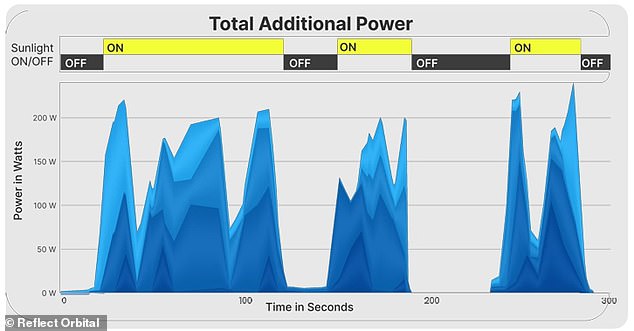
This graph, provided by Reflect Orbital, shows the wattage of power produced during the hot air balloon experiment. The ‘On’ sections indicate when the reflected sunlight is directly over the solar panels. The ‘Off’ sections indicate when the sunbeam is not pointed at the panels
‘Let there be light!’ someone is heard yelling when it’s clear the test has been a success.
To make extra sure there wasn’t some sort of anomaly, one member of the team moved the panels out of the direct sunlight for several seconds.
Power production took an immediate nosedive, according to the company’s projections.
People who commented on the YouTube video had a range of reactions from excitement to curiosity.
‘This is amazing, but terrifying if you think of it! With just 2 mirrors your buddy on the ground was able to feel the heat!’ one person wrote.
Another wrote: ‘OMG this looks like so much fun to build and test.’
Even though solar power itself has indisputably gotten cheaper to produce and manage, the inconsistent nature of it remains a significant hurdle to its widespread adoption as a renewable energy source.
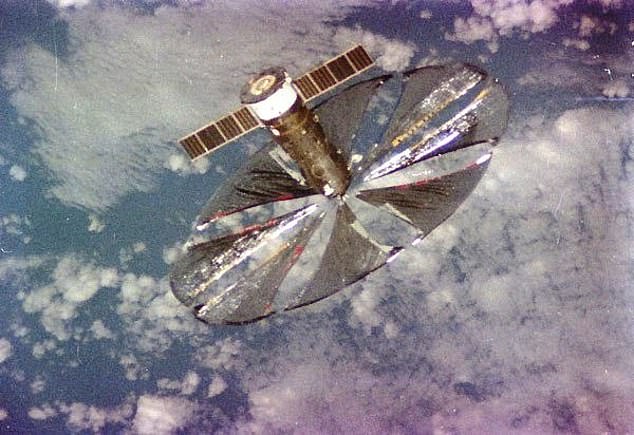
Pictured: An orbiting satellite with reflective mirrors built by the Russian government in the late 1980s and early 1990s. The project was initially effective, but scientists working on replicating its results after the fall of the Soviet Union ran into major problems. They ultimately couldn’t replicate the success
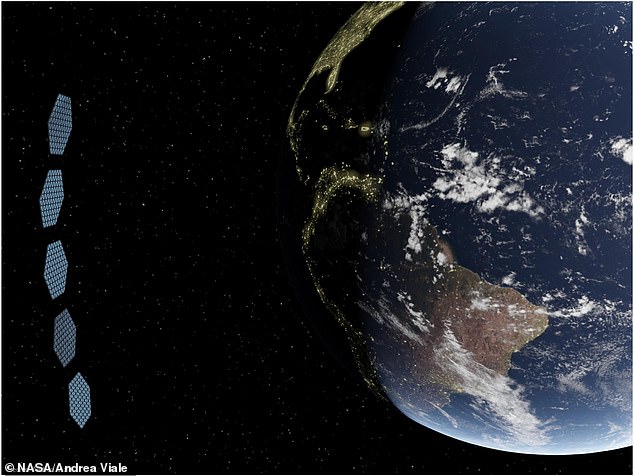
Pictured: A rendering of what space mirror satellites might look like
Low, thick clouds and stormy weather can also block sunlight during the daytime, when there would normally be ample opportunities to create solar power.
That’s on top of seasonal changes that radically alter the amount of sunlight blanketing particular areas of the Earth.
While the equator gets more direct sunlight throughout the year, the north and south hemispheres experience significantly fewer hours of daytime during their respective winters due to Earth’s 23.5 degree axial tilt.
Reflect Orbital is looking to address many of these issues with its mirror-equipped satellites, which in theory, could aim sunlight to any location on Earth’s surface.
Nowack has pointed out that Russia experimented with similar technology in the late 1980s and early 1990s.
The Znamya project, as it was called, initially built a satellite with mylar mirrors that was effective at reflecting sunlight.
But after the fall of the Soviet Union in 1991, scientists were never able to replicate the success, mainly due to how expensive sending satellites into the sky was back then.
The University of Glasgow’s SOLSPACE project, which also had a presentation at London’s space conference, is also pursuing orbital solar reflectors.
Now that Reflect Orbital has witnessed that mirrors do have the capability of making solar panels more effective on a small scale, the team is reportedly planning to launch a prototype satellite next year.
DailyMail.com reached out to Nowack and Semmelhack for comment.

